
Covid-19 is providing enormous challenges but also new opportunities to rethink collaborations involving different service providers to achieve end-to-end services involving different participants.
This is Part II of the 2-part article on Covid-19. Part I touched upon the need for anti-fragility in the Enterprise-In-Motion as well as the emergence of virtuality at work, education, entertainment, and perhaps most importantly, social interactions.
These are cultural trends whose impact will be carried for many years to come.
Here we focus on several technology trends that are also going to substantively impact industries such as healthcare and manufacturing; public sector services; and society in general.
The combination of the cultural (Part I) and technological (Part II) innovations is a pivot that will launch transformative initiatives for the benefit of all.
The post-Covid-19 world will be quite different.
That will be a good and positive outcome of this otherwise destructive pandemic.
It will be up to us to leverage this unique opportunity that could be the start of new applications of technology that are innovative and transformative for many industry sectors: supply chain, healthcare, manufacturing, public sector services, and many more.
We shall see several pragmatic examples of applications to show how these technologies are already addressing the many challenges of Covid-19.
3D Printing in the Covid-19 Era
Of all the technologies that are being revamped and revitalized in the Covid-19 era is additive manufacturing, which is also known as 3D printing. As the name suggests, 3D physical objects are produced additively – layer by layer – from different materials. Affordable and more robust 3D printing is now commonly used in manufacturing.
Additive Manufacturing is typically for lower volumes. It can be and has been used both innovations, prototyping, and production of parts very cost-effectively. Robustness in 3D printing could potentially disrupt large manufacturing operations.
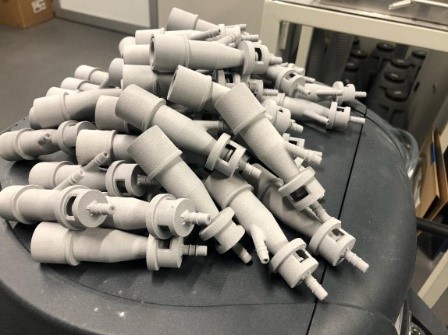
In the Covid-19 era, companies rely on the timely supply of material or 3D components to produce, especially healthcare components and devices. The pandemic caused interruptions in supply chains and put an unprecedented strain on especially the healthcare systems. For instance, Italy was one of the most impacted countries in Europe. Coronavirus caused a surge in the number of people who need oxygenation to survive. A startup company Isinnova 3D printed respirator valves and saved many lives. Originally, the 3D printer was brought directly in the hospital and was operational within a few hours.

There are many other examples of 3D printed products, especially healthcare components that are critical in fighting the pandemic. Millions of healthcare devices have been 3D printed to address demands for masks and other equipment. As another example, Prusa Research printed and donated 100,00 face masks to the Czech government. They also shared the design with the community. The sharing of designs and best practices is a requirement for the even wider adoption of 3D printing – often on-site, such as hospitals.
Now there are some risks, as often the regulatory compliance and safety are sidestepped for expediency and fulfilling immediate demands. The following caution from the NIH website is on point: “While many devices can be printed with a 3D printer at home or your local Maker space, the NIH, FDA, VA, America Makes, and the contributing creators cannot ensure the quality, safety, and efficacy of these designs when manufactured without proper quality controls and processes.” The web site is a 3D printing exchange that promotes the sharing of models and designs with many resources, partnerships, and contributions to promote the printing of models that are “scientifically accurate or medically applicable.”
Blockchain for the Pandemic Challenges
It is good to review some of the core characteristics of Blockchains to elucidate why they fit and address Covid-19 challenges. First and foremost, a Blockchain is a master information repository that is shared across organizations. Organizations participating in the value chain to achieve a particular purpose – for instance, deliver goods on a supply chain – can each modify or add transactions to the Blockchain.
The other important characteristic of Blockchain is the fact that it is secure and “trustless.” This term is a bit confusing. What it means is that the parties engaged in the Blockchain have a healthy dose of mistrust towards each other, but they can rely on the algorithms and the technology of the Blockchain to make sure the shared transactions (the “truth”) on the Blockchain is reliable.
Well, as it turns out, using Blockchain effectively and focusing on the value chain – after all, Blockchain realizes the “Internet of Value” – it might be one of the best technologies directly addressing several key pandemic challenges. The Blockchain Research Institute has identified several compelling use cases of Blockchain in a pandemic. These include Self-sovereign Identity, Data Sharing, Just-in-time supply chain, and Rapid Response Registry for the Workforce. The notion of “self-sovereign” identity is quite interesting. The report describes it as an “inalienable digital identity, one that is neither bestowed nor revocable by any central administrator and is enforceable in any context, in-person and online, anywhere in the world.” Identity through Blockchain balancing unique identification, enforceability with privacy protection from central authorities is a compelling but difficult use case.
We highlight some of the more pragmatic potential applications of Blockchain pandemic use cases.
Mobile, Additive, and Social Manufacturing: As mentioned above, participating in end-to-end production with 3D printing, together with social and additive manufacturing. Blockchain can be used for the exchange of components, payments, and tracking in the supply chain. Blockchain is the foundation of cryptocurrencies. There are potential opportunities for trading with Blockchain. One such pragmatic example is the trading reconciliation and delivery of trades among several companies. Blockchain can provide unprecedented accessibility and transparency of different documents (regulatory, engineering, maintenance, supply, contractual, etc.) between various participants of end-to-end Valuechains.
Supply Chain Traceability – Supply chain is one of the most robust applications of blockchain – as value and tracking can be traced on immutable ledgers across enterprises in potentially different countries. Traceability for manufacturing parts – in conjunction with IoT and AI – can potentially address challenges of supply chain vulnerabilities, especially during disasters such as pandemics. More importantly, for food supply chains, traceability becomes critical and lifesaving. There are promising proposals and ideas. For instance, IBM is commissioned by Food Safety and Inspection Service (FSIS) to develop a proof of concept with Blockchain for food supply chain traceability. The following illustrates the traceability of the food supply chain from farmers to consumers.
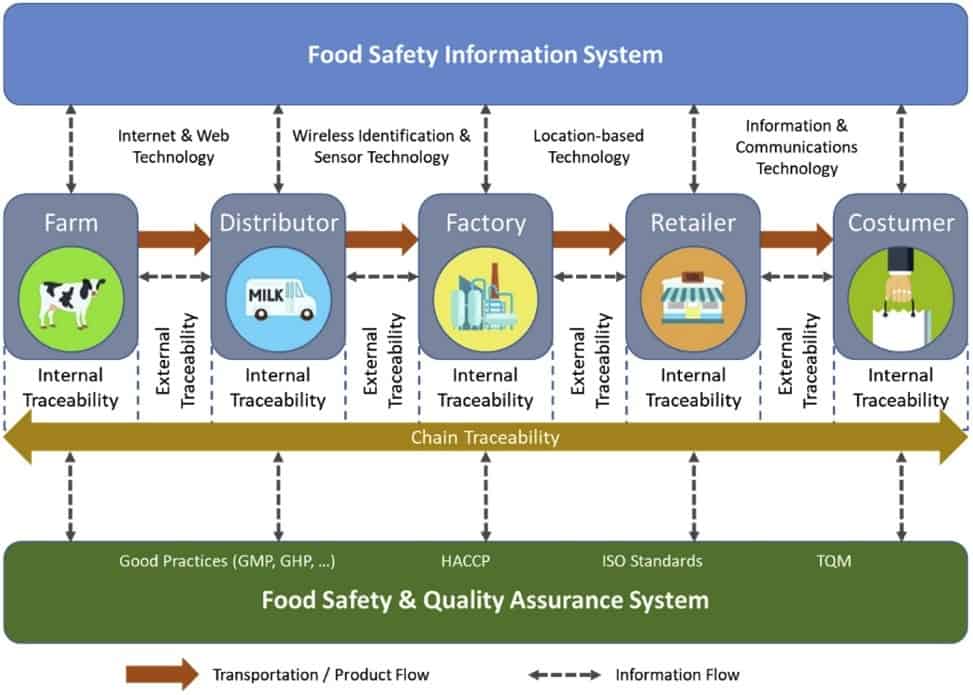
Source: Sciencedirect
Servicing and Operations: Provisioning the best field service technicians and continuous monitoring for optimizations can leverage blockchain – for smart contracts, payments, and recording of operational work on the decentralized ledger. Blockchain also promotes alternative flat organizational patterns for servicing and operations. Applications built on blockchain can allow organizations to execute smart decisions (via smart contracts executing on the blockchain) such as proposals, recommendations, asset allocations, votes, etc. These can involve servicing employees as well as partners and even customers across multiple organizations.
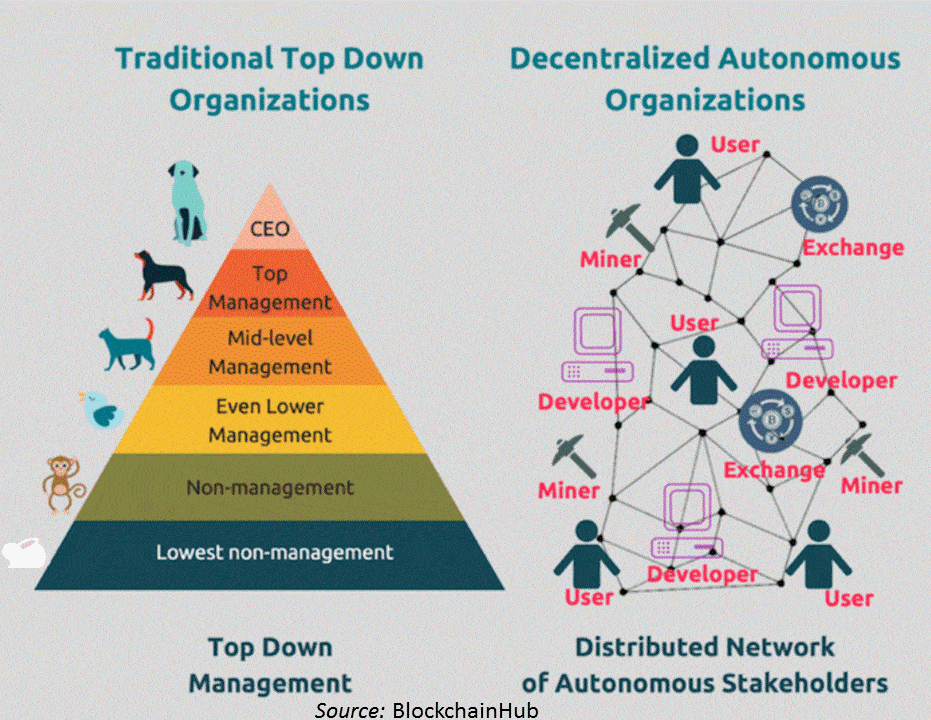
Contact Tracing and Health Management is a robust use case for Blockchain. The readily available and consistent identity and potentially health records on the Blockchain available to different respondents and health organizations is a very compelling use case for Blockchain. For example, UAE is an early adopter of innovative technologies, and it has adopted Blockchain for government services – including healthcare, especially to fight Covid-19. Now there have also been interesting advances leveraging Blockchain in conjunction with surveillance technology elsewhere, especially China. The UAE plans to have 50% of government transactions on the Blockchain by 2021!
Blockchain has a lot of synergy with IoT – the Internet of Things. The post-Covid-19 world will be both increasingly decentralized as well as optimally connected.
Internet of Things for a Connected post-Covid-19 World
In addition to Blockchain traceability, there are also creative and innovative solutions leveraging connected devices to connected entities: from supply chain goods, vehicles, homes, and people. IoT has many applications for the challenges emanating from the disruptions in Supply Chain, Manufacturing, Public Sector services, and, most importantly, Healthcare.
The Covid-19 pandemic exposed the vulnerability of both the private and public sectors in managing assets. There are still products – such as hand sanitizers of Webcams – that are either difficult to find or expensive. With IoT, the assets could be the manufactured goods, or the assets can be the connected devices themselves. They could be simple devices with low energy and communication bandwidth capabilities that need a more sophisticated gateway to connect to the Cloud. In the context of the Industrial Internet, powerful connected devices have on-board computing capabilities that allow them to process data at the edges and connect to the Cloud through WiFi or 5G connections. Alternatively, for manufactured goods, RFID could be attached and embedded in the packaging of the goods – for instance, in transportation with containers.
Service levels of assets – often parts in supply chain applications – could be critical. This relates to the previous business value proposition. The opportunities for addressing Covid-19 challenges pertain to tracking people’s movements, provisioning, and delivery of supplies:
- Tracking of People under Quarantine: Many countries are leveraging IoT technologies to track people. For example, South Korea’s Ministry of Interior and Safety has developed an app that uses GPS to track those who have been ordered to quarantine. Similarly, Hong Kong is using a connected wristband for geofencing.
- Supply Chain Tracking and Optimizations: IoT tracking is becoming increasingly important in the end-to-end supply chains, especially due to the pandemic disruptions. End-to-end asset visibility is becoming a requirement for manufacturers. Optimization of the service level agreements for end-to-end delivery of the connected or tracked assets or devices. The tracking is done through geo-positioning of connected vehicles or assets.
- IoT Intelligence at the Edges: Covid-19 responses need to be real-time and intelligent. Increasingly business logic and AI models are executing at the IoT edges. There are many advantages to executing AI models at the edge. In many applications where instantaneous decisions need to be made dealing with, for instance, hazardous material, or dangerous levels of pollution or even emergency dispatching the delays of round-tripping from a Cloud-based data center for AI model execution could be prohibitive.
In the Covid-19 era, Healthcare services, as well as inventory management of connected Healthcare devices, are lifesaving. There is even a term for it Internet of Medical Thing (IoMT), and you can read about how it is transforming healthcare here.
Let us look at a couple of IoMT examples specifically for Covid-19.
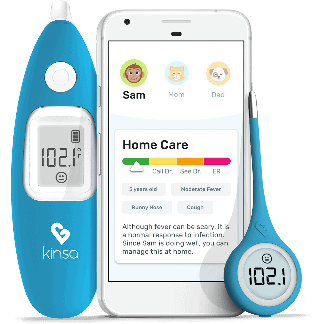
Kinsa is using data collected from their network of connected thermometers to track the pandemic – focusing in their case on fever levels. Fever is considered one of the leading indicators of Covid-19 infection. Kinsa has millions of connected thermometer consumers and is collaborating with local governments and health authorities – as temperature screening remains critical for avoiding the spread of Covid-19. The temperature data of the connected thermometer is aggregated anonymously and is displayed per county (illustrated for Middlesex County, where I live).
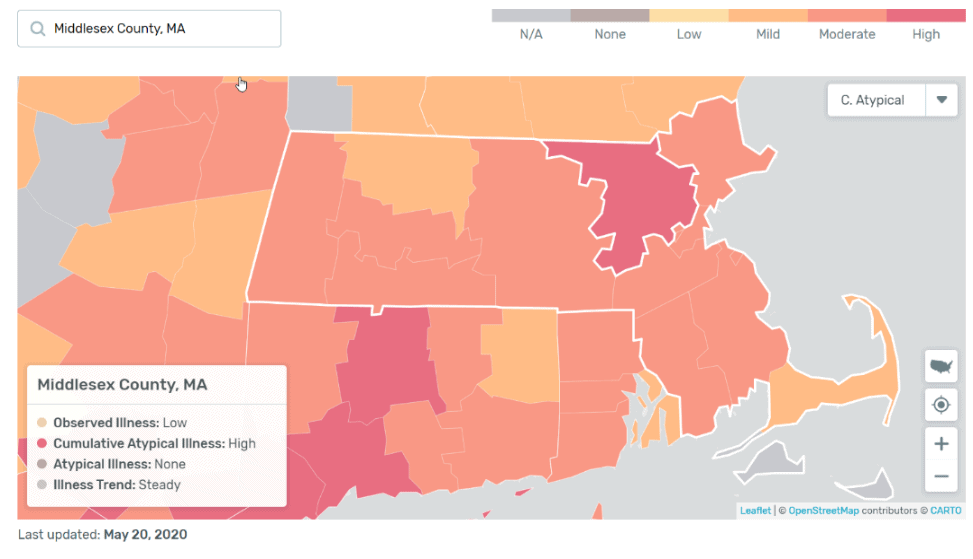
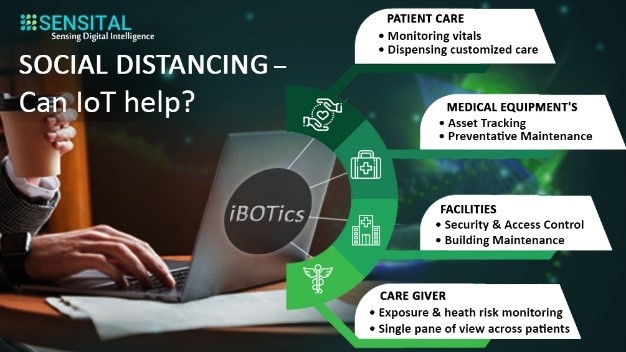
Another compelling use case for IoT in healthcare comes from Sensital that provides an intelligent IoT platform. The iBOTics IoT platform provides a robust framework for remote health monitoring. The sensors can monitor multiple health indicators and allow the healthcare respondents to provide customized and holistic healthcare to many patients. Addressing the needs of healthcare service providers is also critical: “As we have learned the hard way with the COVID pandemic, that not only patients but also service providers are at a health risk. Therefore, there is a need to look at this idea of social distancing in a holistic way.”
AI and Automation: VSaaS for Covid-19
Robots and automation have already been impacting many industries from Manufacturing to Healthcare, to energy, to public sector, and much more. The post-Covid-19 era will see an increase in robotics and automation. In all sectors. For instance, Amazon warehouses in the US and Europe had employees who tested positive for the virus. The presence of robots in Industry 4.0 manufacturing floors, distribution, warehousing, and logistics is going to not only increase but accelerate.
The real value and transformation come through orchestrating automated activities and tasks potentially involving various participants who could be individuals, robots, organizations, or even countries. Value-Stream-As-A-Service (VSaaS) is a new model for collaboration involving multiple enterprises or business units. Each enterprise or its specific business unit will bring the required capability. They can come in to participate or opt-out. VSaaS supports capability “plug-ins” as participants in collaborative Value Streams. Thus, VSaaS supports collaborations between various capabilities of businesses across multiple enterprises.
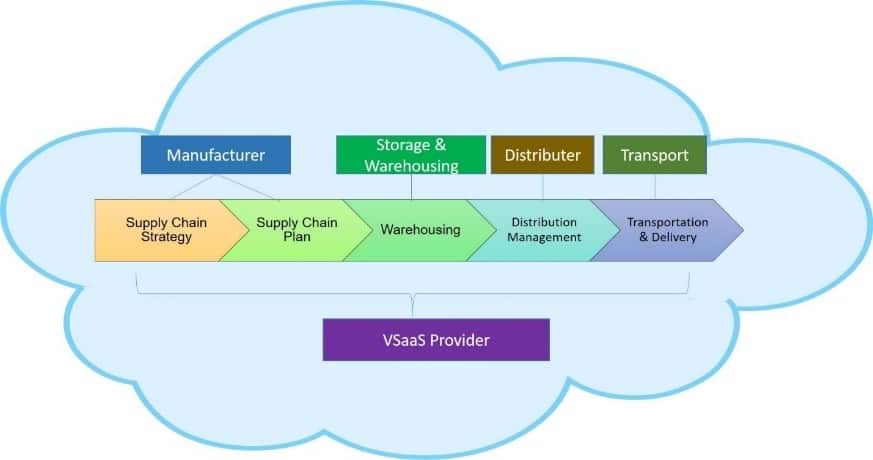
Here are three compelling dimensions of how Covid-19 compels and accelerates the VSaaS model:
- Service Provider plug-ins: the post-Covid-19 world will be an era of accelerated collaboration that will also enable various participants in VSaaS to establish credibility – Know Your Partner – and participate in the end-to-end value stream. The plug-in service providers will be leveraging technologies such as Blockchain, IoT, and Automation with continuous data mining and execution.
- Agility in Manufacturing and Supplying critical parts: There are many sources of potential disruptions to the Supply Chain – including the current pandemics. VSaaS can be automated and provide benefits that target precisely the challenges of interrupted supplies: Just-In-Time (JIT) Inventory Management, Just-Needed-Visibility, Just-Desired Innovation, Just-Required Collaboration, and Just-Predicted Mitigation of Risk.
- Flexibility In Currency Exchanges and Decentralized Blockchain Traceability: Blockchain will increasingly become a powerful enabler for Covid-19 VSaaS solutions. It is the foundation of cryptocurrencies, such as Bitcoin. Many countries will face the potential depreciation of their currencies. Cryptocurrencies provide secure, immutable, and robust traceability of goods and services that are transferred between various trading partners in end-to-end value streams.
Covid-19 is providing enormous challenges but also new opportunities to rethink collaborations involving different service providers to achieve end-to-end services involving different participants. It will take a while but potentially a new Cloud model – VSaaS could emerge. VSaaS will provide unprecedented visibility involving multiple partnering enterprises and accomplish their shared objectives in an optimal, collaborative manner.





























